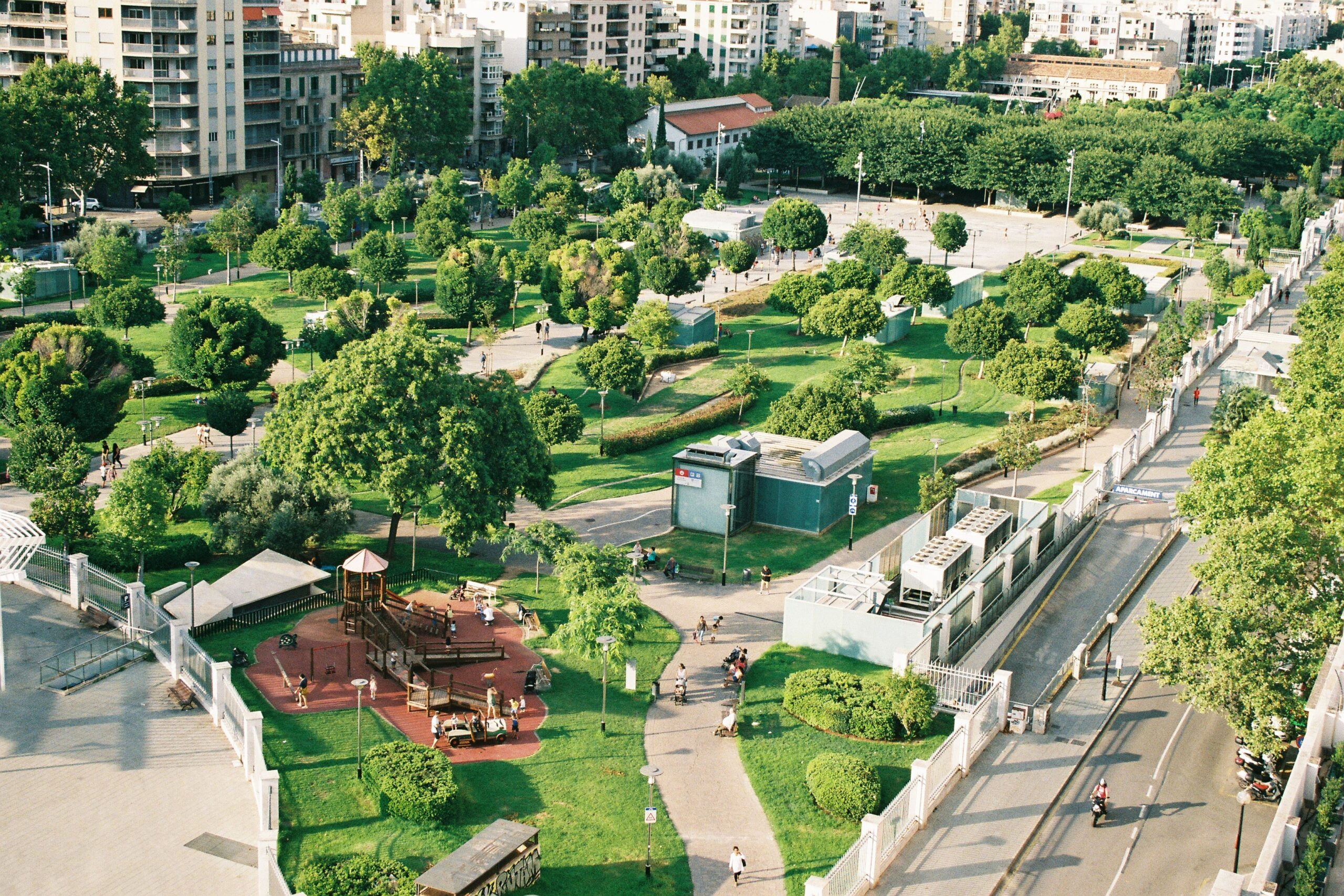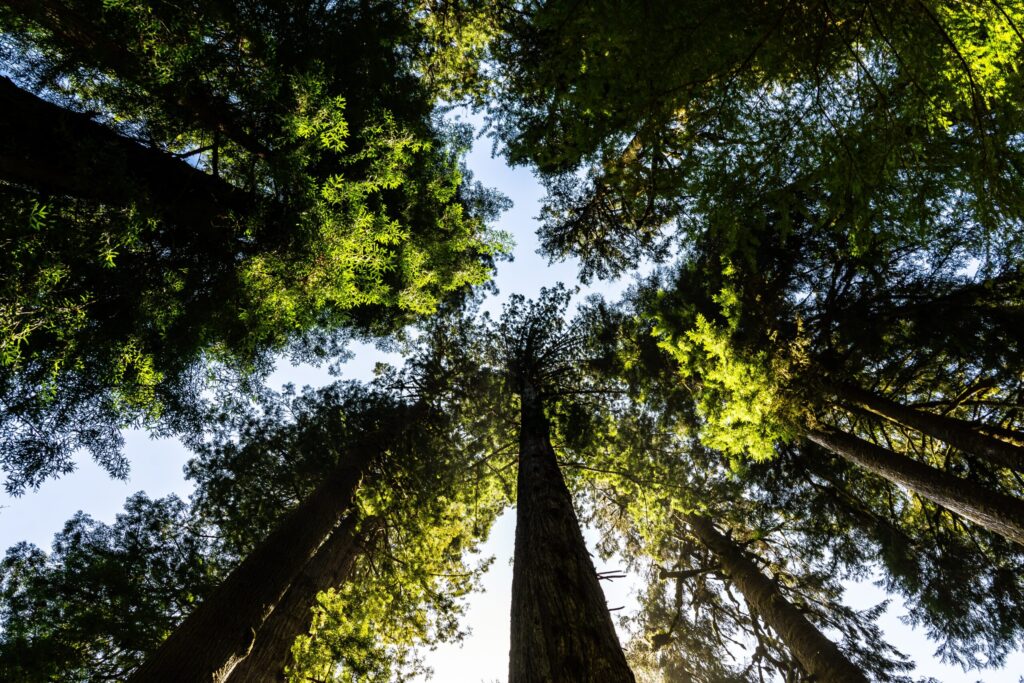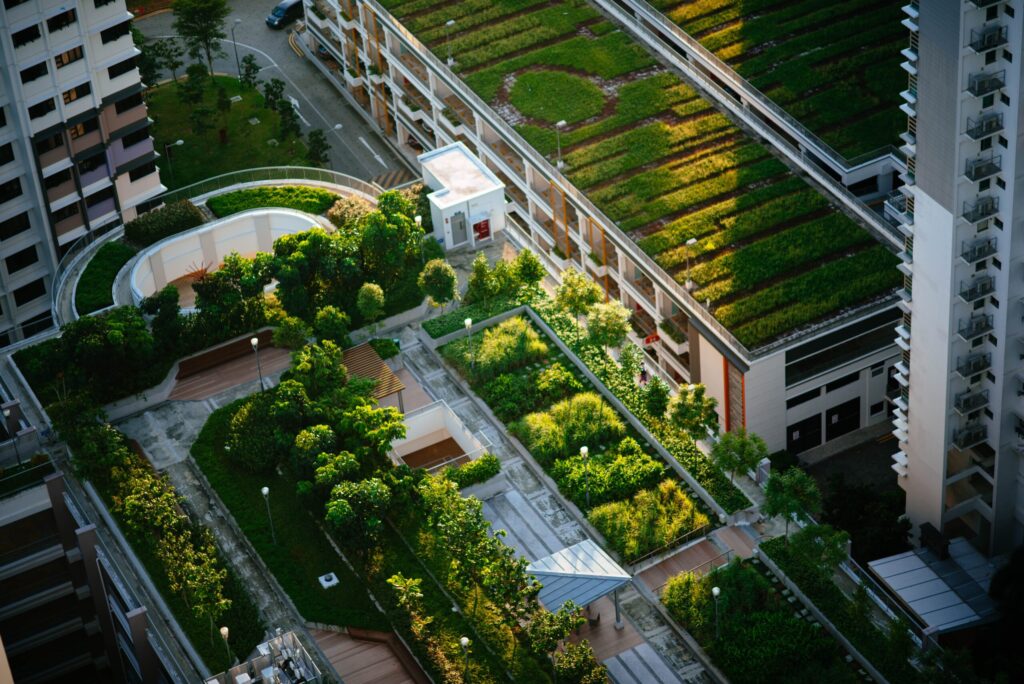
The Importance Of Biodiversity In Cities
June 13, 2022 — Blog
By Margo Berthier
How to foster healthy habitats for the species living in our urban areas
Before delving into the nitty-gritty of green cities, we must first understand why the preservation of biodiversity is crucial in a global context to help mitigate and adapt to climate change. Biodiversity is the variety of all life on Earth, encompassing plants, bacteria, animals, and humans. Our world is full of interconnected ecosystems that help balance a flux of energy, and it is the vast range of species on Earth that fuels these healthy ecosystems, providing us with the air we breathe and the food we eat. We mustn’t undermine the importance of biodiversity, and this is especially true during our current climate crisis, where biodiversity has an immense impact on climate change. For instance, biodiverse ecosystems store the excess carbon in our atmosphere in trees, soil, peatlands, and other terrestrial landmasses. Marine ecosystems also absorb emissions and heat, which help attenuate the effects of climate change; the ocean alone absorbs 30% of human-produced emissions (1). Healthy ecosystems minimize the negative impacts of natural disasters, as trees, bushes, and wetlands naturally slow down water, absorb rainwater, and reduce flooding (2). Finally, lack of biodiversity makes our ecosystem less resilient to pollutants, damaging the air we breathe and the water we drink. In other words, harming biodiversity will lead to the collapse of entire ecosystems and consequently undermine our efforts to protect Earth from a changing climate. Conversely, fostering thriving biodiversity will help restore healthy ecosystems, which will help us tackle climate change and adapt to its impacts.
An increasingly urbanized world
As more and more people move to cities, we must not overlook the potential for change within the heart of urban settings. It is crucial to note that biodiversity is not a phenomenon limited to rural areas (3). We may not notice biodiversity in cities because we have built over it and impeded the natural habitats that have existed far longer than we have. Although biodiversity remains in these urban settings, humans have continuously damaged it over time and must help it flourish to restore healthy ecosystems. We have trespassed on the homes of animals and plants, and it is our responsibility to readapt their habitats to promote their health and wellness. In doing so, we would also be protecting our planet and ecosystems and, consequently, our own well-being. Urban settings can still be harmonious with nature, and we should not view them as two separate entities, but rather two environments that can co-exist and evolve to work towards a more sustainable world.

How to foster biodiversity in cities
So, how can we restore biodiversity in cities? Many efforts have been made to make cities greener and more sustainable through local policy, nature-based design and architecture, and national benchmarking and goal orientation. Introducing more biodiversity into existing urban ecosystems is one way to foster biodiversity, however, it is essential to ensure that plants incorporated are locally-found species to avoid disrupting the native ecosystem. If the species and plants introduced are alien to the existing ecosystem, they will not be able to provide a habitat for breeding, shelter, and food, and the birds and insects that co-evolved with humans will not survive. The foreign plants will not only impede on the food web, they will also turn into invasive pests and outcompete the local species (4). While we absolutely need more green spaces, we must be careful in selecting those which will yield the greatest positive impact on the system overall. This means that the soil, grasses, and flowers planted must correspond to what naturally grows in the area. By matching new plant life to its surroundings, the local species will be able to flourish and will guarantee that chosen plants will grow and thrive in the local climate. As a result, these urban green spaces can become a refuge to many organisms, especially arthropods – such as beetles, spiders, and centipedes – and butterflies, bees, and other insects essential for pollination – who thrive on plant diversity (5).

Our cities are increasingly growing, with new development often dominated by high rise buildings and greater density. Given this lack of open area and space, planners and architects have had to become more creative, incorporating green roofs and living walls to promote biodiversity in the heart of dense urban areas.
Urban ecology can also help us solve other issues faced by cities. Historical patterns of urban development have led to large sealed surfaces, such as asphalt and concrete, which retain heat and surface runoff. Increased biodiversity and ecosystem maintenance could significantly help lower the temperature of cities, offsetting the effect of car-centric development. Studies have found that vegetation can decrease a city’s temperature by 1C°-9C°. Roots from trees help rainwater infiltrate the ground, and leaves slow down raindrops, which reduce surface runoff. Finally, foliage can help trap pollution and reduce noise. It is also important to note that green roofsare an excellent tool for natural flood management – the soil can soak up a significant amount of water and help reduce the risk of flash floods. Beyond the many benefits an increase in biodiversity and healthy ecosystems may have on native species, there are also direct positive outcomes on the well-being of inhabitants and the health of cities.
Policies and programs
It is interesting to take note of various policies and programs already implemented to illustrate the ongoing efforts made to help preserve urban biodiversity. The City Biodiversity Index, created in 2008, is employed by cities worldwide to calculate their biodiversity. Based on a scoring system, the index allows a city to obtain points, focusing on native biodiversity, ecosystem services, and biodiversity governance and management. With research showing that urban greening is an effective method of reducing temperature, cities are making great efforts to ensure that their development includes a variety of green approaches. For instance, the Mayor of London is aiming to “increase the amount of surface area greened in the Central Activities Zone by at least 5% by 2030, and further 5% by 2050”; as announced in the latest London Plan. These positive trends demonstrate a global tendency towards increased urban ecology, with an underlying effort to preserve biodiversity and stave off warming.
In general, simple and straightforward solutions might seem like the way to solve our climate challenges, such as planting trees everywhere. However, given the complexity of these challenges, real change will require systems-level transformations and holistic solutions that consider the needs and wellbeing of all local species in the establishment of green urban settings. It is not enough to look at the surface of cities. We must delve deeper into the systems and wildlife found within these cities and genuinely understand that it is not about growing just any trees and plants but the right ones that will benefit all existing species in that area.
Sources
1. RBC: Global Asset Management. (2021). https://www.rbcgam.com/en/ca/article/making-connections-biodiversity-and-climate-change/detail
2. The Royal Society. (n.d).https://royalsociety.org/topics-policy/projects/biodiversity/why-is-biodiversity-important/
3. ANS Global. (n.d). https://www.ansgroupglobal.com/blog/importance-biodiversity-urban-areas
4. Audubon. (n.d). https://www.audubon.org/content/why-native-plants-matter
5. The Conversation. (2021). Whttps://theconversation.com/how-urban-gardens-can-boost-biodiversity-and-make-cities-more-sustainable-16281
Cover Image Credit: Photo by Nerea Martí Sesarino on Unsplash